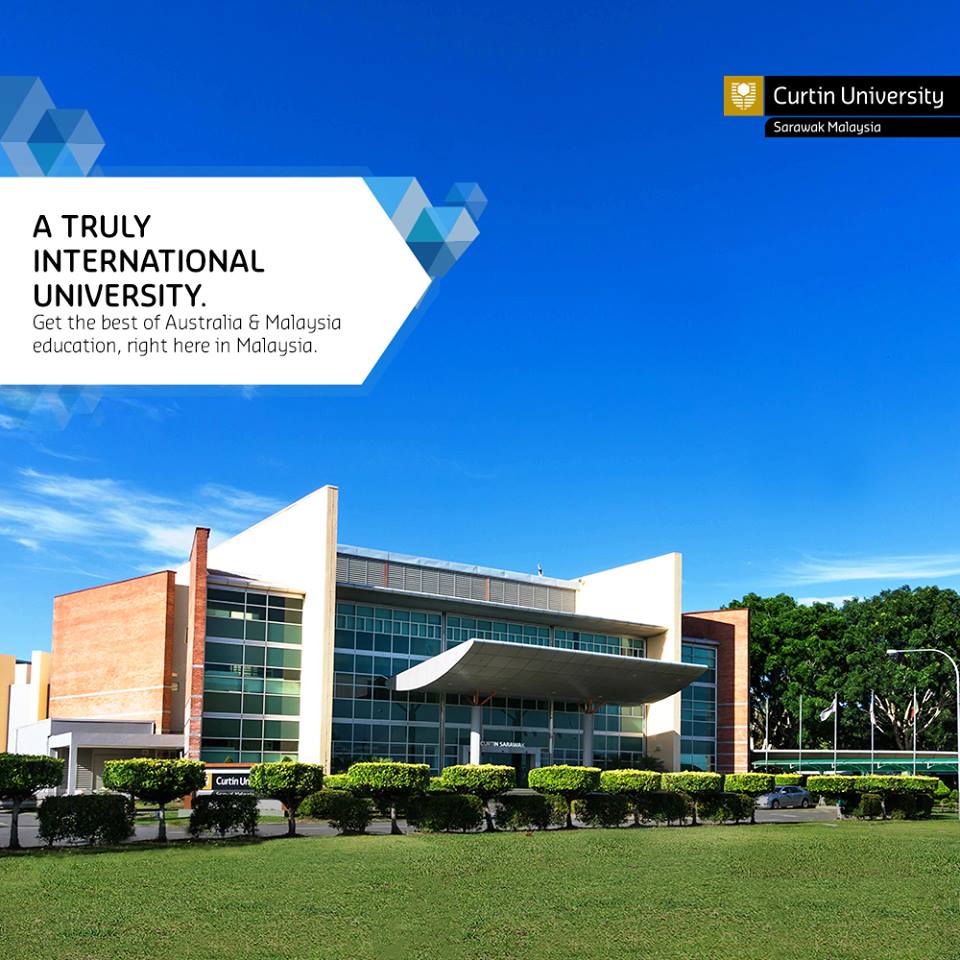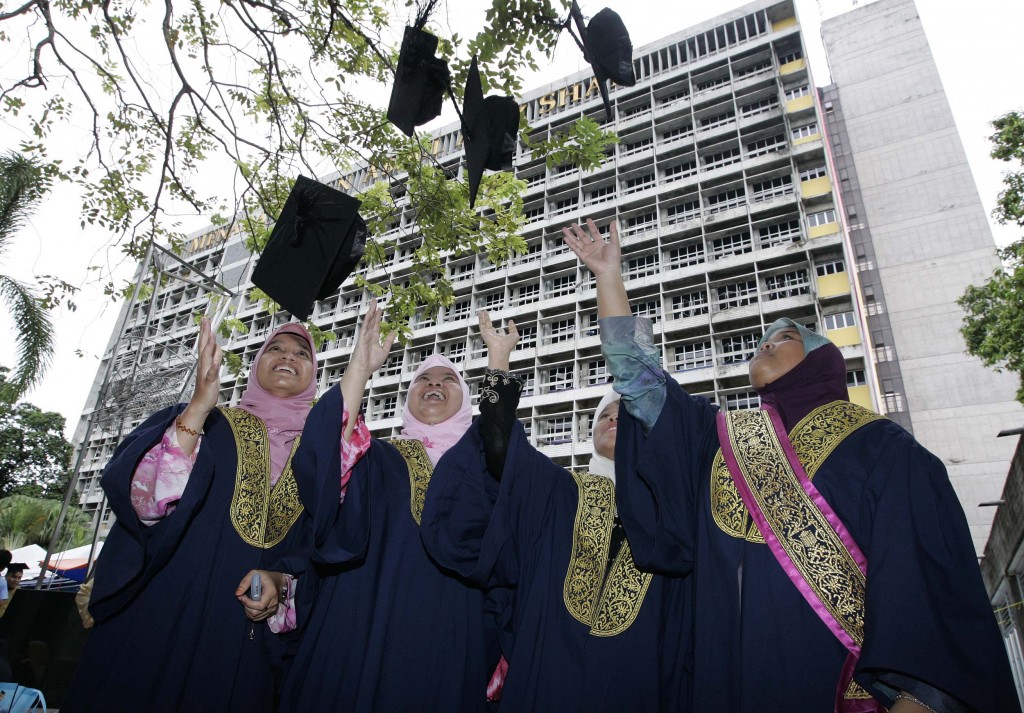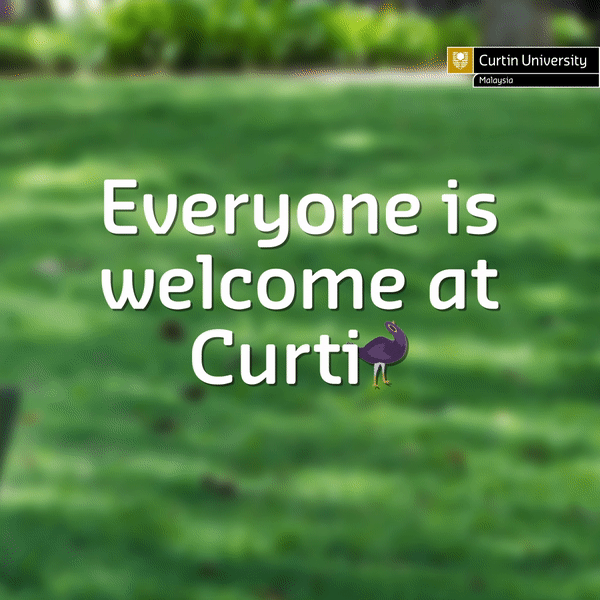Guess how much money Msian uni students get? 8 surprising results from our university survey

- 6.9KShares
- Facebook6.6K
- Twitter39
- LinkedIn9
- Email76
- WhatsApp153
We all have our own assumptions on university students. They’re extremely passionate – or maybe not passionate at all. They are always concerned with the brands they carry. They party and lepak in mamaks. They’re the product of a tough generation. But… how true are our assumptions?

Together with Curtin Malaysia, we ran our first Kepoh Uni Survey 2017 to find out the behaviours of Malaysian university students. If you aren’t familiar with Curtin Malaysia, they’re the Malaysian arm of *the* Curtin University that’s based in Perth, Australia. From syllabus to facilities to student societies, both campuses are pretty much the same except for two things: ours is based by the sunny beachside of Miri and ours is a lot more affordable too 😛
But… why is Curtin so kepoh? Because as educators, they wanted to gain insights about the people who they hope would make tomorrow better. And from the looks of our data, Malaysian students are a pretty interesting bunch. Let’s start with some preliminary info first:
- Total respondents: 4,256 respondents all across Malaysia (our biggest survey ever!)
- State breakdown: Each state had respondents, but Selangor was a big majority. Only Kelantan, Terengganu and Perlis had <50 respondents each.
- Gender breakdown: 51% male, 48% as female, 1% others.
- Primary language, 47% English-speakers, 33% BM-speakers, 15% Chinese dialect-speakers, 3% Indian dialect-speakers, and the remaining 2% were others.
- This survey ran from 11th Jan – 21st Jan 2017
Ok ground points set, let’s see what we got!
1. Only 8% follow what their parents tell them (and most regretted it)

With parents guiding their kids from the day they are born, how much influence do they have when their little ones turn 18? If you’ve always wanted your little Madonna to be a doctor, would she listen to you? Turns out, only 8% would take up a course suggested by their parents. Perhaps it comes as no surprise that most of them (54%) actually ended up regretting taking them. One CILISOS staff included 🙁
So how are other students choosing their courses? Most students go by personal interest (58%), followed by looking at prospects (19%), taking whatever is given to them (12%), following the trend (2%) and following their friends (1%).
Interestingly, apart from what we mentioned above, we found that those who ended up NOT regretting were the ones who followed their interest, their friends, looked at future prospects, and just being grateful and taking whatever is given to them. So if you’re looking to further your studies, stay away from following trends (e.g. IT in the 2000s)… High chance you’re gonna find yourself competing against 23198204 other graduates for one specific job -___-
2. Surprisingly, they’re not that keen on parties. They like to lepak at home (72%)

Waittaminute… They’ve got freedom, energy and youth, but they’re not partying in Zouk?!
When we asked respondents on how they prefer spending their weekends, Malaysian students – especially current ones – actually chilling at home (72%). Even more surprisingly is that 40% would like to spend time with their family (40%). Cybercafes and clubs are ranked THE LOWEST at 7% and 10% respectively. To add to this, would it surprise you that when it comes to studying, Malaysians prefer doing it alone (70%) instead of with friends (30%)?
Adding to that, it seems like they’re looking for some zen in their lives. In another question, we asked respondents to select the three most important factors in deciding a university. First on the list was a full range of facilities (66.2%), followed by peacefulness (54%) and then availability of public transport (50%). The city’s usually only peaceful during balik kampung season (unless your city is Penang, of which it’ll be a sardine can), so Borneo’s vast and untouched beaches may not seem like a bad idea after all.

3. Majority (37%) still think that public universities have the best education quality
The question: Between prestigious local universities, international universities, government universities, semi-public universities and small-scale institutions… which one do Malaysians think provide the best education quality? Not sure what today’s kids grow up believing, but when we were young (ya CILISOS people quite old), our parents had always held high regards for gomen universities like Universiti Malaya. So perhaps that’s why, most of our respondents (37%) still believed that Malaysian public universities offer the best education quality.

Sadly, it seems that things aren’t going so well for public unis now. The quality of education of our public universities seem to be falling when compared to those worldwide, and recently the gomen has also announced a lot of budget cuts where education is concerned. In fact, some have ended up going viral for the wrong reasons.
Coming in at a very close second are locally-based international universities (32%), which in comparison to public universities, have been quickly gaining popularity by springing up in various places in Malaysia. We can see why they’re a favourite – dah la our Ringgit is as weak as a breadstick, how to afford sending our kids overseas to study? Take for example a 3-year Business degree – it would cost you about RM285,120 (AUD$86,400) to do it in Curtin’s HQ in Perth, but only about RM65,736 in the Sarawak campus for the exact syllabus and the facilities.
4. Not sure why but Malaysians just love engineering

If we could ask Malaysians to put their hand up if they knew someone in engineering, we’d look like we were at a rave party. Literally everyone knows someone who studied one of the many facets in that field. And it’s not even a trendy course like mass comm… When we asked our respondents about the courses they took, majority of current (19%) and ex-students (20%) selected engineering!
When we narrowed down their demographics, we weren’t too surprised to find that it is still a male-dominated industry (approx 75%). Despite being a generally more expensive course, we found that they were from middle-class families with a household income from RM2000 – RM7000.
Apart from engineering, business seems to be a very popular course too (8% current and 11% ex-students). Most of these students seemed to walk in the footsteps of their fathers, who were mostly business owners. But what we found interesting was the gender breakdown: ex-students (58% male and 42% female) vs current students (46% male and 54% female). There used to be more boys in business class, but they’ve been overtaken by girls!
Actually right, East Malaysia may not be a bad prospect for both engineering and business. If you’re interested in Oil & Gas, there are many off-shore platforms around Miri that can provide hands-on experiences that a city office may not provide. (Shell and Petronas are friends with Curtin *wink wink*) And while cities like Kuching and Kota Kinabalu are more developed than most think, there’s still lots of room for trading and commerce… just do it with a sincere heart, cos Borneo folks have been known to be genuine, kind and generally nice fellas. These qualities very hard to find in KL nowadays la.
5. Most students get over RM400 allowance… but boys also get more than girls

While most students (31%) get over RM400 allowance a month, it turns out that most of them were guys (55%).
In the concern for equal pay (or in this case, allowance), it’s already a universal truth that the gender pay gap is real. It happens everywhere, from Hollywood all the way to our own longkang backyards. The National Statistics Department’s Salaries and Wages Survey Report 2013 found that men earned up to 8.4% more than women, with an average salary of RM2260 for men and RM2071 for women… this even if both genders had the same job title.
But before you get upset with our survey findings, we also found that more guys drive themselves to university (43%). Girls on the other hand, mainly walk (36%), take public transport (23%),or get driven around by someone they know (9%). So on that note, probably that’s why they get more la.
In the area of gender wars, here’s something else we found…
6. Way more GUYS broke the dress code
In educational institutions, there’s obviously gonna be rules. Thankfully it’s nothing ridiculously rigid or restricting, just the ones that seem reasonable to most – no spaghetti strap tops, no tube tops, no miniskirts, no shorts, no flip-flops…
While “dressing” as an issue has always been related to women (like getting barred from a gomen office for a skirt that brushes the knees, getting threats to spray paint women with “sexy sarees” on Thaipusam…), we were pretty surprised to find that the ones that break the dress code are those who identified themselves as guys!

In this question, we also asked our respondents to select which misbehaviour they were guilty of doing. The result wasn’t surprising – guys were generally more misbehaving than girls.
The only two categories that were a close tally were skipping classes (81% guys and 75% girls) and copying in exams (37% guys and 25% girls). But guys were the clear winners in other hardcore categories, like scolding lecturers, vandalising, attending classes drunk and getting someone else to take the exam on their behalf.
7. Chinese dialect-speakers look for race, BM-speakers look for religion
Living in a melting pot of cultures, the public sentiment has gone from having strong racial identities in the 1950s to being “Malaysian first”. In fact, in a previous CILISOS’ survey, 26% of respondents were offended when asked to identify themselves according to race!

But the preference to be around people of the same skin colour, language, or even religion is pretty common in human nature. There is a natural need for humans to find common grounds with another human being, and having someone of the same “kind” or upbringing helps that.
As for our findings, we asked our respondents – which social environment would they rather have in universities?
- Race + language: 9% preference. Out of these, most of these were Chinese dialect-speakers
- Race + language + religion: 4% preference. Out of these, most of these were BM-speakers
In conclusion, we found that religion was a particularly important factor for Malaysians who primarily speak in BM. English and Indian dialect-speakers in general didn’t really care about this.
It’s important to note tho that these numbers make up a really, really small minority. There was overwhelming response by Malaysians of all primary languages, which showed that most Malaysians are actually looking for more diversity (86%) in universities.
There’s a lot a person can learn from being in a community of different cultures. It’s not so much about learning about different nationalities, but being able to tackle problems and create solutions through a different perspective. Plus, it’ll make your uni life a lot more fun 🙂

Malaysian students seem to have a good head on their shoulders

If there’s one thing we learned from the survey, it’s that Malaysian students, be it past, present or future, have pretty solid heads on their shoulders. So we guess our friends in Curtin Malaysia can rest assured that Malaysians will indeed make tomorrow better.
We asked a lot more questions in our survey, and while we’d love to give you all our data, we can’t la. Maybe if you called us out for coffee la 😉 But one thing we can definitely say with total confidence is this. Despite what we think or hear about the attitudes of current students, the responses that we got showed that our students are actually pretty smart and responsible.
If you’re a data freak like us, here are more stats on their lifestyles for your indulgence:
- Most respondents are thrifty with their money. 49% would rather get an affordable course/uni, vs 17% who rather be in debt for a more expensive course/uni
- How often do they buy RM10 coffee? 46% rarely ever does, 27% have NEVER bought it, and only 5% buys it once a week
- How many smoke? Only 8% had their first ciggie in university, 11% were already smoking BEFORE that. The remaining 81% said that they have never smoked in university 🙂
- Majority (29%) said that they start studying a week before exams.
- KL vs Selangor? KL-ites prefer to spend their weekends dating (27%) while Selangorians study (29%)
- Kelantan vs Terengganu? Kelantan fellas were generally more well-behaved and open-minded. Terengganu folks smoked more in university (22% vs 5%), were less studious (26% vs 33%), broke the dress code more (54% vs 31%), and had a lesser preference towards diversity (9% vs 17%)
- The least popular student societies are on religion (6%) and activism (4%)
- What kinda coursemates do they want? Majority (77%) prefer coursemates who are not always studying, but willing to try new things. Only a drop of respondents (3%) prefer coursemates that are cool, but disappear during exams
- As for those who have graduated, more women (58%) want to pursue their studies again as compared to men (52%)
Aaaand that’s a wrap! We hoped it was insightful for you as it was for us. Thanks to all who participated in CILISOS.MY x Curtin University, Malaysia‘s Kepoh Uni Survey 2017, y’all really really did surprise us in a good way. Brb while we nurse our head from all the data-crunching…
- 6.9KShares
- Facebook6.6K
- Twitter39
- LinkedIn9
- Email76
- WhatsApp153



